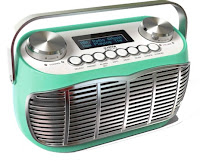Latest UK Radio Audience Figures
The latest listening figures for radio listening in the UK were issued on 28th October and contained a few surprises.
Commercial radio is reaching 36.8 million people across the UK, the biggest audience it has ever recorded, according to the data. RAJAR has modified its way of collating and publicising listening but the basic principles of REACH and audience SHARE still prevail. The total combined audience for all UK radio (BBC and commercial) is now the highest level recorded at 49.5m people. That represents 89% of the UK adult population.
THE KEY POINTS.
- Digital listening surges to 65.8% of all radio listening
- New stations (Times, Capital Dance, Boom, etc) attracting hundreds of thousand s of listeners.
- DAB now the predominant platform for radio listening accounting for 43% of all listening compared to 34.2% for AM/FM
- New digital stations deliver strong performances
- Digital listening now accounts for the majority of in car listening at 53%
Digital listening has surged past 60% to now account for 65.8% – or almost two-thirds – of all radio listening, according to new data for Q3 2021 released by RAJAR today (28 October 2021). The data release marks RAJAR’s return to publication with a new modified methodology having been suspended for 18 months due to the COVID-19 pandemic.
According to the new data, listening via DAB is now the most popular means of all radio listening accounting for 43% of all listening (and 65% of digital listening), exceeding listening via AM/FM which accounts for 34.2% of listening. Listening via online and apps accounts for 18.1% of all listening (and 27.5% of digital listening) and listening via DTV accounts for 4.7% of all listening (and 7.2% of digital listening).
The new data shows that 41 million adults, or 74% of the population aged 15+, now tune into digital radio every week, and 69% claim to own or have access to a DAB radio.
The strong performance of digital platforms has been boosted by the launch of a number of new digital stations in the last 18 months, which receive their first RAJAR results today, including Times Radio with a reach of 637,000 listeners; Capital DANCE with a reach of 287,000 listeners; and Boom Radio with a reach of 233,000 listeners.
These stations join a host of established digital-only stations which continue to perform strongly, including BBC 6 Music with 2.687 million listeners, and KISSTORY, the most popular commercial digital-only station, with 2.255 million listeners. BBC Radio 4 Extra is the third most popular with 2.036 million listeners, followed by BBC Radio 5 live sports extra with 1.697 million listeners. Other stations in the top 10 are digital-only stations Absolute 80s (1.690 million listeners); Virgin Radio (1.631 million listeners); and Heart 80s (1.493 million listeners).
INCAR RADIO LISTENING. 46.6% of listening in the car is to DAB while AM/FM listening is 33.1%,. Online/apps listening in-car accounting for only 6.4% of all in car listening.
Source: RAJAR/Ipsos MORI/RSMB





















